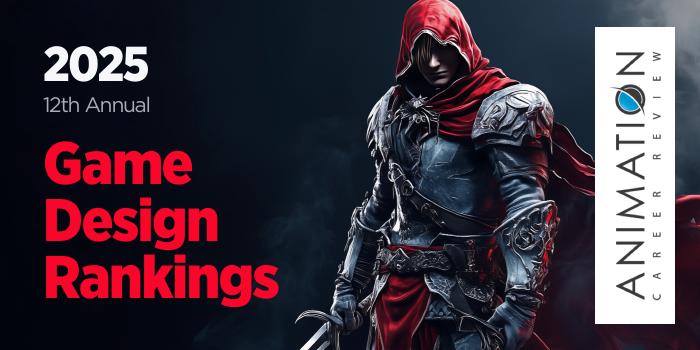Michigan State University (MSU) is home to the College of Communication Arts and Sciences (ComArtSci) and the College of Engineering. Serving more than 4,500 students across five departments, the College of ComArtSci provides BA, BS, MA, PhD, minor, and certificate programs in the arts and sciences of communication.
The MSU College of Engineering employs 297 faculty that serve more than 7,100 students. With 12 undergraduate degree programs and 11 graduate degree programs, the college is one of MSU’s founding disciplines and one of the school’s largest academic units. Engineering consists of 10 academic departments from Applied Engineering Sciences to Technology Engineering.
Across colleges, aspiring game designers may select from seven different programs leading to a degree, certificate, or minor. All programs provide access to state-of-the-art labs, facilities, and centers. This includes the Games for Entertainment and Learning Lab; the GEL Lab; virtual reality (VR) labs; the Social and Psychological Approaches to Research on Technology-Interaction Effects (SPARTIE) Lab; Quello Center for Media and Information Policy; and the Rural Computing Consortium.
The Games for Entertainment and Learning Lab and the GEL Lab house state-of-the-art technology for designing prototypes, learning new techniques, and to advance research on the individual and social impacts of digital games.
Across programs, students also have the opportunity to participate in game development and testing projects; complete an internship; participate in group research projects; and engage with industry professionals through visiting artist talks. Students have interned at places such as Insomniac games, Apple, ABC Studios, Will Winn Games, Fabrik Entertainment in LA, The Daily Show, BrainSurf Informatics, Gray Television, DaySmart Software, Re-Source Partners, and MOSAIC Unity Center.
The College of Communication Arts and Sciences houses the Department of Media and Information (MI). Within the department is the Game Design and Development program (GDD). Established in 2005, the program consists of the Games and Interactive Media BA; GDD minor; and the Serious Games MA certificate. Related programs include the Media and Information MA (MI MA).
All degree-seeking students have additional opportunities to gain hands-on experience with businesses and non-profit organizations in areas such as video game design, augmented and virtual reality (AR/VR), information technology, and human-computer interaction (HCI).
The MSU Games and Interactive Media BA is a collaborative, project-based program with three focus areas including Game Design; Game Development; and Games Graphics and Animation. All areas explore video game production, board games, emerging interactive media, AR/VR, special effects, artistry, the design process, and management. Examples of required courses include Games and Interactivity; Media and Sketching Graphics; Games and Society; Methods for Understanding Users; and Bringing Media to Market.
Students in the Game Design focus area will take additional courses such as Game Level Design; Serious Game Design Studio; Building Virtual Worlds; Game Design and Development I-II; and Game Interface Design. Course examples for Games Graphics and Animation include Concept Design for Games, Film, and TV; Advanced 3D Modeling; Advanced Three-Dimensional Computer Animation; and Compositing and Special Effects.
Game Development students will take courses such as Game and Interactive Media Development; Introduction to Programming I-II; Matrix Algebra with Computational Applications; and Building Innovative Interfaces. Across all focus areas, students have opportunities to work on real-world projects with partners such as Electronic Arts (EA), Ubisoft, Blizzard Entertainment, Insomniac Games, Bungie, and Rockstar Games.
Students will graduate from the MSU Games and Interactive Media BA program with a professional portfolio of projects across a wide variety of works. Program alumni are prepared to pursue titles such as Game Designer, 2D Artist, Game Scenario Writer, Interaction Designer, Game Developer, Technical Artist, Game Programmer, Producer, Level Designer, Usability Engineer, Technical Designer, Project Manager, UI/UX Designer, and Quality Assurance Specialist.
The MSU ComArtSci GDD minor requires 15 credit hours. To enter the program, students must complete Games and Interactivity as a prerequisite along with two courses selected from a set list of options. Examples include Introduction to Programming II; Concept Design for Games, Film, and TV; Game and Interactive Media Development; and Fundamentals of Comic Art and Graphic Novels. For minor requirements students will take 12 credit hours including Game Design and Development I-II; Collaborative Design; and Game Design Studio.
For the remaining credits students will select courses from close to 30 options. Examples include Building Virtual Worlds; Interaction Design; Software Engineering; Advanced Game Development; Interactive Environments and Digital Fabrication; Computer Graphics; and Advanced 3D Modeling.
The GDD minor at Michigan State University is available as an elective to students who are enrolled in the Computer Science BS; the Studio Art BA or BFA; or the Graphic Design BFA.
The Serious Games MA certificate attracts CS students, MSU MI graduate students, Master of Arts in Educational Technology (MAET) students, and doctoral students from other universities. Open to all MSU graduate students as a stand-alone program, the certificate requires the following courses: Theories of Games and Interaction Design; Foundations of Serious Games; and Understanding Users. The Serious Games MA certificate is transcriptable, and it can be completed either on-campus/hybrid or 100% online.
The Media and Information MA at Michigan State University is a STEM-approved program that explores the design, the use of communication technologies and information, and management. The program is immersive, hands-on, and customizable, with opportunities to engage in real world experiences. As of 2025, MI MA students also have the option to focus in Game Studies and Design; Human-Computer Interaction/and User Experience Design (HCI/UX); or Media Policy. Students may also build their own focus area from all available courses.
In addition to specific focus area courses, all MI MA students will take courses such as Foundations of Serious Games; Interactive Usability and Accessibility-Design and Evaluation; Theories of Games and Interaction Design; Global Media and Communications; Interaction Design; and Game and Project Design Studio I-II. The culminating experience for the MI MA is the Master’s Project, completed across two courses.
Graduates of the MI MA program at Michigan State University are prepared to pursue leadership roles in areas such as game design and development, 3D technology, serious games, digital media, game programming, web design and development, user experience (UX), simulation and visualization, and information studies.
Program alumni have been hired at places such as Electronic Arts (EA), Rockstar Games, Blizzard Entertainment, Insomniac Games, Bungie, Ubisoft, Publicis Sapient, BuzzFeed, and ESPN.
The College of Engineering at Michigan State University houses the Department of Computer Science and Engineering—home to the Computer Science (CS) program. Available pathways include the BS, MS, and PhD. CS BS students can add the GDD minor and/or concentrate in Multimedia and Graphics, while MS and PhD students can add the Serious Games certificate.
Course examples for the Multimedia and Graphics concentration include Game Design and Development I-II; Electronic Art; Game and Interactive Media Development; Computer Graphics; Game Design Studio; Building Virtual Worlds; Experiments in Digital Video; Introduction to Film; and Advanced 3D Modeling.
Across programs, students will take courses such as Collaborative Design; Introduction to Programming II; Computer Systems; Theory and Algorithms; Machine Learning; Software Engineering; Systems Design and Analysis; Advanced Software Engineering; Web Application Architecture and Development
Deep Learning; Translation of Programming Languages; Design and Theory of Algorithms; Computer Vision; Introduction to Artificial Intelligence; Parallel Computing; and Evolutionary Computing.
Graduates of the Computer Science programs at Michigan State University are prepared to pursue roles in all areas of game design, development, and programming; the broader software engineering industry; mobile application development; web design and development; and UX design, among others.
MSU Computer Science alumni have been hired at game design studios and other places such as Amazon, Epic Systems, Boeing, Microsoft, Compuware, General Motors, IBM, and Ford Motor Company.
Founded in 1855, Michigan State University began as the Agricultural College of the State of Michigan. On the first day of classes on May 14, 1857, the College welcomed five faculty members and 63 students into three buildings: College Hall, Saints’ Rest, and a brick horse barn. When it opened, the school became the first institution of higher learning in the U.S. to teach scientific agriculture.
Today, MSU is one of the nation’s premier land-grant research universities. The school serves approximately 52,090 students enrolled in more than 200 programs across 17 degree-granting colleges. Michigan State University is accredited by the Higher Learning Commission (HLC).







